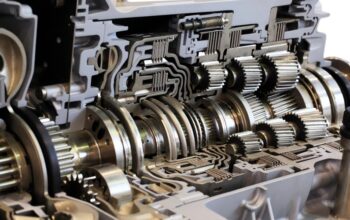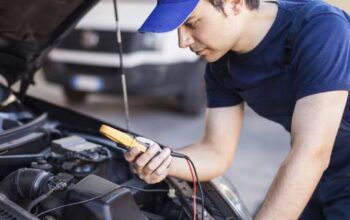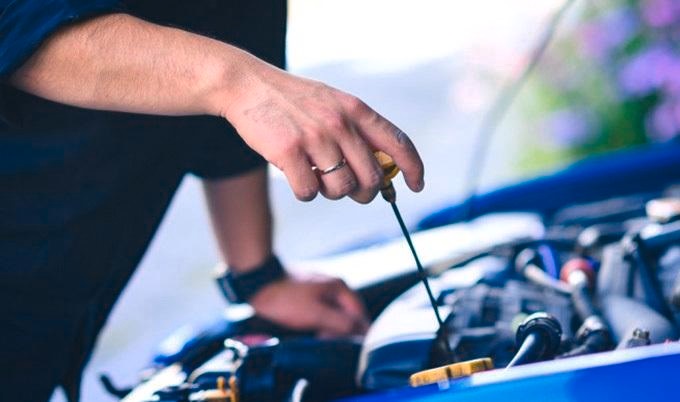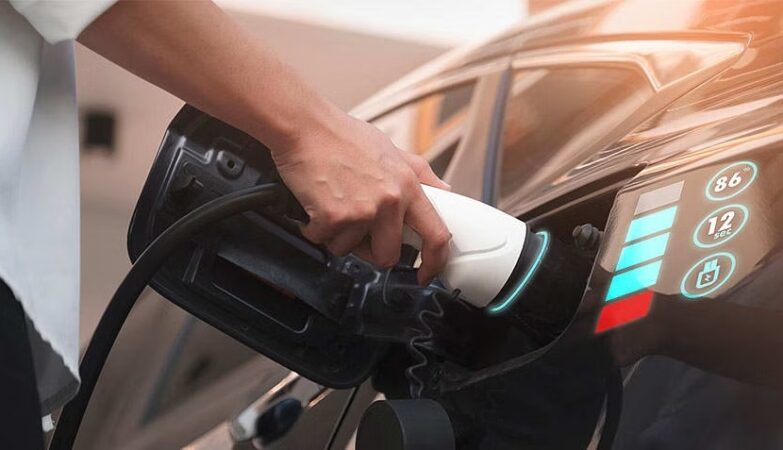A bad fuel pressure regulator can hurt other parts of your car. It’s key to spot the signs and fix it fast. The fuel pressure regulator keeps your car running right. If it breaks, your car might not run well, use more fuel, or stall.
Look out for signs like your car not running right, stalling, or using too much fuel. You might also see black smoke coming out. Knowing these signs helps fix the problem before it gets worse.
Fuel pressure regulators help mix air and fuel just right. If they fail, your car might not get enough fuel. This happens in about 70{c191540f7fd7f9d5237bc93d1281964a6c30e2c34ed75ae17bfa0364ede5f1f6} of bad cases. Sometimes, a stuck regulator or blocked line can also cause problems.
Checking your car regularly can catch issues early. This saves money and keeps your car running well. It’s important to know how fuel pressure regulators work to find and fix problems fast.
Key Takeaways
- A faulty fuel pressure regulator can cause decreased performance, poor fuel economy, and engine misfires.
- Recognizing the signs of a failing fuel pressure regulator is key to fixing it and avoiding more damage.
- Common symptoms include performance loss, engine hesitation, stalling, poor fuel economy, misfires, and black smoke in exhaust fumes.
- About 50{c191540f7fd7f9d5237bc93d1281964a6c30e2c34ed75ae17bfa0364ede5f1f6} of people think the fuel pump is the problem when it’s really the fuel pressure regulator.
- Regular checks can find problems early, saving money and keeping your car running well.
- Fuel pressure regulators are vital for the right air-fuel mix, and failing can lead to low fuel pressure.
Understanding Fuel Pressure Regulators and Their Function
The fuel pressure regulator is key to the engine’s health. It controls the fuel pressure going into the engine. This is vital for the fuel to burn fully.
Knowing how it works and its parts is important. The fuel pressure regulator’s function is to keep the fuel-to-air mix right. This mix is key for the engine to run well. The regulator does this by managing the fuel pressure.
The components of fuel pressure regulators are a diaphragm, spring, and valve. These parts work together to control fuel pressure. The diaphragm feels the fuel pressure. The spring and valve adjust it.
The fuel pressure regulator is very important for the engine. It makes sure the engine runs smoothly and well. If it fails, the engine might not run right, use more fuel, and could even get damaged.
| Component | Function |
| Diaphragm | Senses the pressure of the fuel |
| Spring | Works with the valve to adjust the pressure |
| Valve | Regulates the flow of fuel into the combustion chamber |
Common Signs of a Failing Fuel Pressure Regulator
A failing fuel pressure regulator shows many signs and symptoms. These include fuel leaks, strange smells, and engine performance changes. Spotting these symptoms early helps avoid engine damage.
Some common signs of a failing regulator are:
- Fuel droplets under the vehicle
- The smell of fuel from the dipstick
- Spark plugs appearing black
A bad fuel pressure regulator can cause many issues. These include lower fuel efficiency and a higher risk of engine fires. It’s key to fix these symptoms quickly to keep the vehicle safe.
Also, a failing regulator can make the engine run poorly. This includes slower acceleration and rough idling. Knowing these symptoms and acting fast can stop bigger problems.
| Symptom | Description |
| Fuel Leaks | Visible droplets of fuel under the vehicle |
| Unusual Smells | Smell of fuel from the dipstick or other areas |
| Engine Performance Issues | Decreased acceleration, rough idling, and other performance problems |
Impact of Faulty Fuel Pressure Regulators on Engine Performance
A faulty fuel pressure regulator can really hurt your engine’s performance. It can cause power loss, poor fuel economy, and engine misfires. If the regulator fails, it can mess up the air-fuel mix, leading to bad engine performance and possible damage.
Some common problems with faulty fuel pressure regulators include:
- Power loss and decreased acceleration
- Poor fuel economy and increased fuel consumption
- Engine misfires and rough idle
Regular checks and maintenance can spot fuel pressure regulator issues early. This helps keep your vehicle running well and might stop breakdowns. By fixing these problems fast, you can keep your engine running smoothly, reduce power loss, and save on fuel.
Drivers can also prevent fuel pressure regulator problems. Using high-quality fuel and avoiding extreme driving can help. These steps can make your fuel pressure regulator last longer and keep your engine in top shape.
| Issue | Symptom | Effect on Engine Performance |
| Faulty fuel pressure regulator | Power loss, poor fuel economy, engine misfires | Decreased engine performance, possible engine damage |
| Clogged fuel injectors | Rough idling, poor acceleration | Decreased fuel efficiency, possible engine damage |
| Dirty or clogged fuel filter | Decreased engine performance, poor fuel economy | Reduced engine power, possible engine damage |
Diagnostic Steps for Testing Your Fuel Pressure Regulator
To check if your fuel pressure regulator works right, follow certain diagnostic steps. You’ll need a fuel injection testing kit and a vacuum pump for this. The goal is to make sure the fuel pressure regulator keeps the right pressure. This is key for your engine to run well.
One important step is to look at the fuel pressure in the injector manifold. It should be between 38-44 psi. Also, the fuel pressure when idling should be between 30-33 psi. If the pressure is not in these ranges, it might mean there’s a problem with the fuel pressure regulator.
When you’re testing, also watch for any drops in pressure. A drop of below 21 PSI in less than 5 minutes could mean trouble with the fuel pressure regulator. By following these diagnostic steps and using the right tools, you can find out if your fuel pressure regulator is working right. Then, you can fix or replace it if needed.
- Check fuel pressure in the injector manifold (38-44 psi)
- Check fuel pressure while idling (30-33 psi)
- Monitor pressure drop over time (below 21 PSI in less than 5 minutes)
By following these steps and using the right tools, you can make sure your fuel pressure regulator is working right. This will help your engine run smoothly. Always check your vehicle’s manual for specific diagnostic steps and testing methods.
Black Smoke and Fuel Smell: Critical Warning Signs
It’s important to know the signs of a bad fuel pressure regulator. Look out for black smoke and fuel smell. These signs mean the regulator isn’t working right, causing fuel and air mix problems.
A bad fuel pressure regulator can make the engine run too rich. This leads to black smoke from the exhaust. A faulty regulator can also make the engine use more fuel, raising fuel costs.
Fuel leaks from a broken regulator can cause fuel smells or leaks you can see.
Understanding Exhaust Color Changes
Changes in exhaust color can show problems with the fuel pressure regulator. Black smoke means there’s a problem. White smoke might mean coolant is leaking. It’s key to watch for these color changes and fix them fast to avoid engine damage.
Identifying Fuel Leaks and Safety Concerns
Fuel leaks are very dangerous, as they can cause fires or explosions. It’s vital to find and fix fuel leaks quickly to avoid accidents. Regular checks for leaks can help keep the engine safe and running well.
When to Seek Immediate Professional Help
If you see black smoke or smell fuel, get help right away. A bad fuel pressure regulator can really hurt the engine if not fixed. A mechanic can find and fix the problem, making sure the engine runs safely and efficiently.
| Warning Sign | Description |
| Black Smoke | Indicates a rich fuel-air mixture, potentially causing engine damage |
| Fuel Smell | Suggests a fuel leak or faulty pressure regulator, posing safety concerns |
Professional vs DIY Replacement Options
Car owners have two main replacement options for a fuel pressure regulator: hiring a professional mechanic or doing it themselves. Each choice has its own advantages and disadvantages. It’s important to think about these before deciding.
A professional replacement is safer because it’s done right and fast. But, it costs more than doing it yourself. A DIY replacement can save money. But, it needs mechanical skills and takes more time.
When choosing between professional and DIY options, consider these points:
- Cost: DIY is cheaper but might need extra tools and parts.
- Time: Professional work is quicker but might need an appointment.
- Expertise: Professional mechanics know how to replace it right.
The choice between professional and DIY depends on what you need and want. Weighing the good and bad of each helps make the right choice. This ensures your fuel pressure regulator is fixed correctly and efficiently.
Cost Factors in Fuel Pressure Regulator Replacement
Replacing a fuel pressure regulator can cost a lot, from $100 to $350. The price depends on parts, labor, and extra repairs. Parts pricing changes with the car model, costing $50 to $200 in Canada.
Don’t forget about labor costs, which can be $50 to $150. This depends on the system’s complexity and where you are. Sometimes, you’ll need more repairs, making the total cost go up. Here are some estimated costs:
- Average parts cost: $50 to $200
- Typical labor costs: $50 to $150
- Total replacement cost: $100 to $350
It’s important to think about these costs when deciding to replace. Knowing the costs helps you plan better. Regular maintenance can also help your fuel pressure regulator last longer, saving you money.
In summary, replacing a fuel pressure regulator’s cost can change a lot. It depends on parts, labor, and extra repairs. By looking at these costs, you can make a better choice and plan for the replacement.
| Cost Factor | Estimated Cost |
| Parts | $50 to $200 |
| Labor | $50 to $150 |
| Total | $100 to $350 |
Preventive Maintenance Tips for Extended Regulator Life
Regular preventive maintenance is key to making a fuel pressure regulator last longer. Using high-quality fuel from trusted sources helps a lot. It lowers the chance of fuel system problems and makes the regulator last longer.
It’s also smart to change the fuel filter every 15,000 to 30,000 miles. This keeps fuel flowing well and stops engine performance from getting worse. Keeping the fuel tank full helps avoid pump damage and sediment buildup. This can make the pump last up to 50{c191540f7fd7f9d5237bc93d1281964a6c30e2c34ed75ae17bfa0364ede5f1f6} longer.
Other preventive maintenance tips include: * Getting a fuel pressure regulator that fits your vehicle * Doing regular engine tune-ups for better performance and fuel use * Cleaning fuel injectors with professional-grade tools to improve flow * Using fuel lines that match the OEM’s to avoid leaks and fires
By sticking to these tips and doing regular preventive maintenance, you can make your regulator last longer. This can also save you money on repairs. Plus, it can make your engine run better and use less fuel, possibly saving 5-10{c191540f7fd7f9d5237bc93d1281964a6c30e2c34ed75ae17bfa0364ede5f1f6} on gas.
Making the Smart Choice: When Replacement Cannot Wait
Ignoring a faulty fuel pressure regulator can lead to expensive repairs. It can also damage other engine parts. Signs like fuel pressure changes are clear warnings.
These changes, from 1-6 lbs at idle to 1 psi under heavy acceleration, mean trouble. Taking action fast is key to avoid engine misfires and power loss. Fuel pump failure is also a risk.
The cost of a new fuel pump can be up to $1,700. This shows why fixing fuel system issues quickly is vital. Waiting to replace a bad fuel pressure regulator can cause big engine damage.
Choosing to replace it early can save you from big repair costs and headaches later. It’s the smart choice to make.







